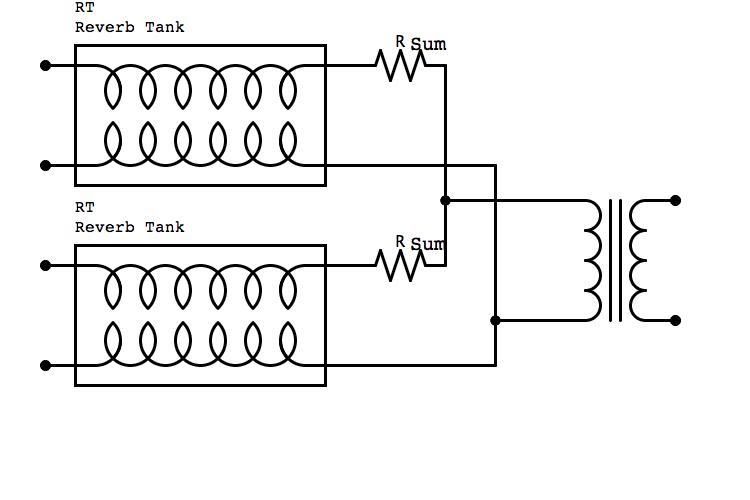plumsolly
Well-known member
I have a hankering for spring reverb and nothing else will do. My plan thus far is to put transformers on either end of an accutronics reverb tank, drive it with the effect send line drivers from my console (these are a ne5534 followed by a transistor pair pushing a 150:600 transformer), and use mic pres for makeup gain. The basic idea is the same as the coolsprings by zerotronics seen here http://zerotronics.com/coolsprings/index.html
He lists the input impedance as 800 ohms and the output impedance as 60 ohms. I'm assuming that the reverb tank is 800 ohms in with a 1:1 transformer in front, and 600 ohms out with a 3:1 stepdown transformer after it. Does this sound right? the reverb tank would be this here http://www.accutronicsreverb.com/Type9.htm. This is from the accutronics website: "Since the output transducer is also essentially inductive, output impedance increases with frequency. Amplifier input impedance should be high enough to prevent premature roll off in the frequency range of interest (i.e., the 10,000 ohm coil appears as 60,000 ohm source at 6kHz)."
Does this all sound right? Will the reverb tank(s) be able to drive that stepdown transformer O.K.? Is there anything else I should be thinking about? –
Thanks, Ben
He lists the input impedance as 800 ohms and the output impedance as 60 ohms. I'm assuming that the reverb tank is 800 ohms in with a 1:1 transformer in front, and 600 ohms out with a 3:1 stepdown transformer after it. Does this sound right? the reverb tank would be this here http://www.accutronicsreverb.com/Type9.htm. This is from the accutronics website: "Since the output transducer is also essentially inductive, output impedance increases with frequency. Amplifier input impedance should be high enough to prevent premature roll off in the frequency range of interest (i.e., the 10,000 ohm coil appears as 60,000 ohm source at 6kHz)."
Does this all sound right? Will the reverb tank(s) be able to drive that stepdown transformer O.K.? Is there anything else I should be thinking about? –
Thanks, Ben



